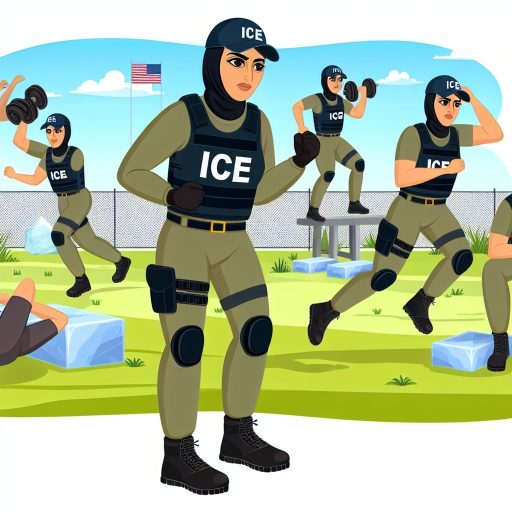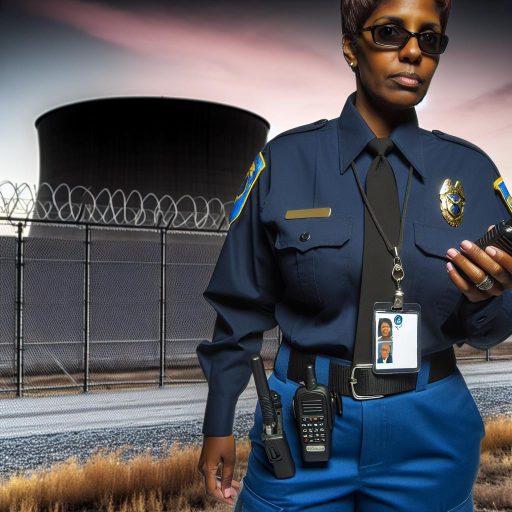Introduction:
Technologies play a crucial role in enhancing the efficiency and effectiveness of disaster response coordination by providing real-time data, communication tools, and mapping capabilities.
In recent years, technologies such as drones, GIS mapping, social media monitoring, and mobile apps have transformed the way disaster response coordinators operate.
These tools enable quicker decision-making, streamline communication among response teams, and enhance situational awareness during disasters.
Geographic Information Systems (GIS) software:
GIS software plays a critical role in disaster response coordination.
This technology helps response coordinators visualize the extent of the disaster.
They can identify critical locations and plan effective response strategies.
Explanation of how GIS software helps in mapping disaster-affected areas:
- GIS software integrates various data sources such as satellite imagery, topographic maps, and infrastructure data to create detailed maps of affected areas.
- By mapping disaster-affected areas, response coordinators can identify vulnerable populations, assess damage severity, and prioritize resources allocation.
- GIS software enables real-time data updates, allowing coordinators to track disasters’ progression, monitor response efforts, and adjust strategies accordingly.
Examples of GIS software used by disaster response coordinators:
- Esri ArcGIS: One of the most widely used GIS software in disaster response for its robust mapping capabilities and data visualization tools.
- QGIS (Quantum GIS): An open-source GIS software that offers powerful geospatial analysis tools and customizable mapping features.
- Google Earth Pro: While not a traditional GIS software, it provides high-resolution imagery for disaster mapping and visualization.
- MapInfo Pro: Known for its spatial analysis capabilities, it is used by response coordinators to make informed decisions based on geographic data.
GIS software is a crucial technology used by disaster response coordinators.
It effectively manages and coordinates response efforts during emergencies.
Mobile communication tools:
Mobile phones and apps play a crucial role in coordinating disaster response efforts.
Real-time communication through mobile devices greatly benefits emergency situations.
When disaster strikes, time is of the essence, and having efficient communication tools in place is essential for disaster response coordinators.
Mobile phones and apps have revolutionized the way responders communicate and coordinate their efforts during emergencies.
Benefits of Mobile Phones and Apps in Coordinating Disaster Response Efforts
- Instant communication: Mobile phones allow responders to communicate instantly with each other, ensuring a swift and coordinated response to the disaster.
- Location tracking: Apps equipped with GPS technology help in tracking the location of responders and resources, making it easier to deploy aid where it is needed most.
- Data collection: Apps can be used to collect data such as the number of affected individuals, medical needs, and damage assessments, providing valuable information for decision-making.
- Emergency alerts: Mobile apps can send out emergency alerts to the public, warning them about the disaster and providing safety instructions to mitigate risks.
- Resource management: Coordinators can use apps to manage and coordinate resources efficiently, ensuring that aid reaches those in need in a timely manner.
- Two-way communication: Mobile communication tools facilitate two-way communication between responders and impacted communities, enabling better coordination and information sharing.
- Real-time updates: Mobile apps allow for real-time updates on the status of the disaster response efforts, helping coordinators make informed decisions quickly.
Mobile communication tools have become indispensable in disaster response coordination.
By leveraging the power of mobile phones and apps, coordinators can streamline their efforts, improve communication, and ultimately save lives during emergencies.
As technology continues to advance, it is crucial for responders to stay updated on the latest tools and innovations in mobile communication to enhance their disaster response capabilities.
Learn More: Key Duties of a Fish and Game Warden
Drones:
Drones are utilized for aerial surveys and damage assessment in disaster response.
They provide real-time data and images from hard-to-reach areas.
Drones help identify areas of devastation and prioritize rescue efforts.
Examples of successful drone deployment:
- In the aftermath of Hurricane Harvey, drones were used to assess damage in Houston.
- In Nepal after the earthquake, drones surveyed remote villages for survivor detection.
- In Australia during bushfires, drones provided critical information to firefighters.
Explore Further: Soft Skills for Successful Counterterrorism Specialists
Transform Your Career Today
Unlock a personalized career strategy that drives real results. Get tailored advice and a roadmap designed just for you.
Start NowSocial media monitoring tools:
During disasters, social media platforms provide real-time information.
Social media monitoring helps in tracking affected areas.
Coordinates rescue operations efficiently.
Disaster response coordinators leverage social media monitoring tools to stay updated with real-time information during emergencies.
These platforms play a crucial role in providing immediate updates about the situation on the ground.
It helps responders make informed decisions swiftly.
Social media monitoring is essential for disaster response coordinators as it allows them to track affected areas accurately.
By analyzing social media posts, coordinators can identify the areas that require immediate attention.
They can prioritize rescue operations accordingly.
Furthermore, social media monitoring tools enable coordinators to coordinate rescue operations effectively.
By gathering insights from social media platforms, coordinators can streamline the deployment of resources.
They can also send personnel to the areas in need, ensuring a prompt and organized response to the disaster.
Uncover the Details: Understanding the Sheriff Election Process
Emergency Alert Systems
During disasters, one of the most crucial technologies utilized by disaster response coordinators is the emergency alert system.
These systems are instrumental in providing mass notifications and warnings to the public.
- Overview of Emergency Alert Systems: Emergency alert systems are designed to deliver critical information to a large number of people simultaneously. This includes alerts about natural disasters, public safety threats, and other emergencies. These systems leverage various communication channels such as text messages, emails, sirens, and social media platforms to ensure that the message reaches as many individuals as possible.
- How These Systems Help in Reaching Out to Affected Populations Quickly: Time is of the essence in disaster situations, and emergency alert systems enable response coordinators to quickly disseminate important information to affected populations. By sending out notifications promptly, these systems help individuals take necessary precautions, evacuate if required, and stay informed about the evolving situation.
Emergency alert systems play a vital role in ensuring the safety and well-being of communities during emergencies.
By leveraging technology to deliver timely and accurate information, disaster response coordinators can effectively reach out to those in need, potentially saving lives and minimizing the impact of disasters.
You Might Also Like: DEA Agent’s Role in Community Outreach Programs

Satellite imaging technology:
Satellite imaging technology plays a crucial role in disaster response coordination.
By utilizing satellites orbiting the Earth, disaster response coordinators are able to gather valuable information that aids in various stages of disaster management.
Transform Your Career Today
Unlock a personalized career strategy that drives real results. Get tailored advice and a roadmap designed just for you.
Start NowBenefits of satellite technology in assessing damage:
- Provides real-time imagery of disaster-stricken areas.
- Offers a comprehensive view of the extent of damage caused.
- Assists in identifying areas in need of immediate attention.
- Helps in evaluating the impact of the disaster on infrastructure.
Satellite imagery allows disaster response coordinators to have a bird’s eye view of the affected regions, enabling them to assess the situation quickly and effectively.
This technology enables coordinators to understand the scale of the disaster and prioritize their response accordingly.
Benefits of satellite technology in coordinating relief efforts:
- Facilitates communication and coordination among response teams.
- Improves the efficiency of resource allocation and deployment.
- Enhances situational awareness for decision-making.
- Supports the planning and execution of rescue operations.
In addition to damage assessment, satellite technology also plays a crucial role in coordinating relief efforts.
It allows response teams to communicate and collaborate effectively, ensuring that resources are allocated efficiently and rescue operations are carried out smoothly.
Satellite imaging technology has revolutionized the way disaster response coordinators operate.
By providing real-time information and a comprehensive view of disaster-affected areas, satellite technology enhances the effectiveness and efficiency of disaster response efforts.
It serves as a valuable tool in mitigating the impact of disasters and saving lives.
Artificial intelligence and machine learning:
Artificial intelligence (AI) and machine learning (ML) play a crucial role in disaster response coordination.
They enable quicker, more effective action in times of crisis.
These technologies are utilized in various ways to streamline operations and enhance decision-making processes.
Explanation of how AI and ML algorithms are used for predictive analysis in disaster response:
- AI and ML algorithms analyze vast amounts of data to identify patterns and trends that can help predict the likelihood and impact of disasters.
- Predictive analysis can forecast potential risks, enabling response coordinators to allocate resources strategically and prepare for emergencies proactively.
- By leveraging historical data and real-time information, AI and ML models can generate accurate predictions, facilitating timely and informed decision-making.
- These technologies enable response teams to prioritize tasks, assess vulnerabilities, and optimize resource allocation based on anticipated needs.
Examples of AI-powered tools used by response coordinators for decision-making:
- AI-based risk assessment tools: These tools evaluate various factors, such as geography, weather conditions, population density, and infrastructure, to identify high-risk areas and vulnerabilities.
- Machine learning algorithms for resource optimization: ML algorithms analyze data on available resources, demand estimates, and logistical constraints to recommend optimal deployment strategies.
- Decision support systems: AI-powered decision support systems provide response coordinators with real-time insights, scenario analysis, and recommendations for effective decision-making during emergencies.
- Predictive analytics platforms: AI-driven predictive analytics platforms process data from diverse sources to forecast disaster scenarios, enabling early warning systems and preventive actions.
Artificial intelligence and machine learning technologies have revolutionized disaster response coordination.
They enhance predictive capabilities, optimize resource utilization, and improve decision-making processes.
These advanced tools empower response teams to act swiftly and efficiently in mitigating the impacts of disasters and saving lives.
Technologies Used by Disaster Response Coordinators
Disaster response coordinators utilize Geographic Information Systems for mapping disaster-affected areas.
They also rely on satellite communication systems for real-time data transmission.
Drones are increasingly being used for aerial surveys and damage assessment post disasters.
Social media platforms play a crucial role in disseminating information to the public.
Mobile applications are used for coordinating volunteers, managing resources, and providing emergency alerts.
Artificial intelligence algorithms help in predictive analysis and optimizing resource allocation.
Internet of Things devices aid in monitoring environmental conditions and infrastructure performance.
Transform Your Career Today
Unlock a personalized career strategy that drives real results. Get tailored advice and a roadmap designed just for you.
Start NowRemote sensing technology is used for early warning systems and situational awareness in disasters.
Virtual reality and augmented reality tools are used for training and simulation exercises.
The integration of these technologies enhances coordination, communication, and response capabilities during disasters.
Future Directions in Disaster Response Technology
The use of technologies in disaster response coordination is crucial for efficient and effective response efforts.
It enables quick decision-making, resource optimization, and better communication among stakeholders.
Moving forward, further research and innovation in technology are needed to enhance disaster response capabilities.
It is essential for organizations and governments to invest in technological solutions that can improve preparedness, response, and recovery from disasters.
Let’s continue to explore new technologies and push the boundaries of innovation to better safeguard communities in times of crisis.
Additional Resources
Safety Assessment Program | California Governor’s Office of …




